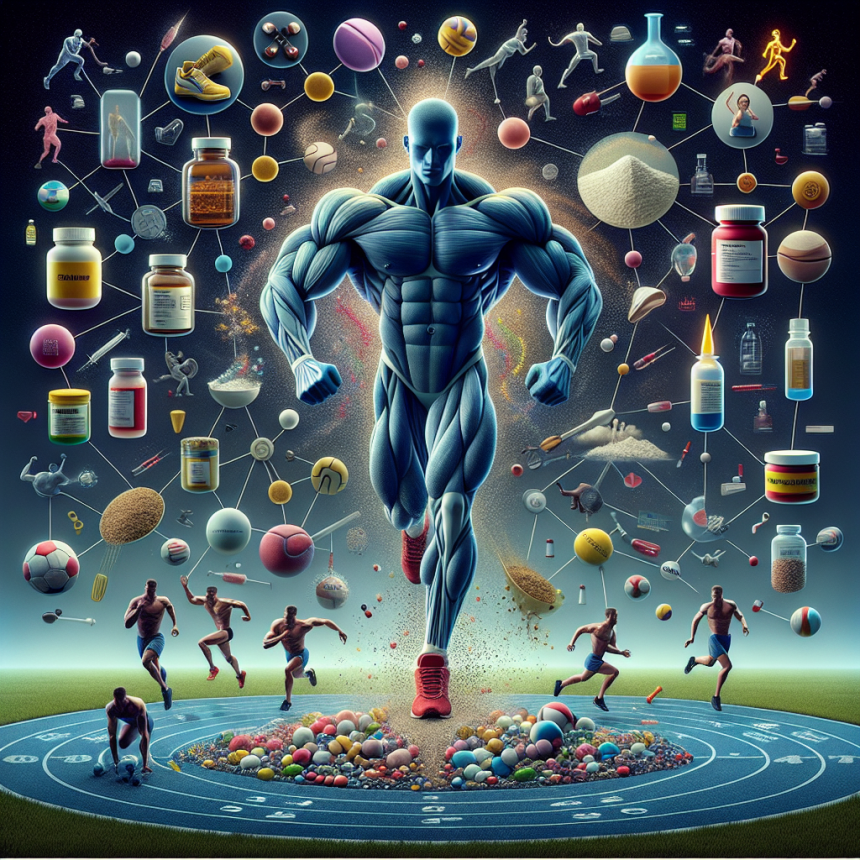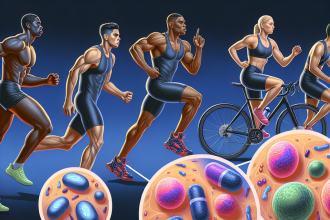-
Table of Contents
- Stenbolone and Its Interaction with Other Drugs in Sports
- Pharmacokinetics of Stenbolone
- Pharmacodynamics of Stenbolone
- Interactions with Other Drugs
- Non-Steroidal Anti-Inflammatory Drugs (NSAIDs)
- Beta-2 Agonists
- Selective Androgen Receptor Modulators (SARMs)
- Real-World Examples
- Expert Opinion
- References
Stenbolone and Its Interaction with Other Drugs in Sports
Sports pharmacology is a rapidly evolving field that aims to enhance athletic performance through the use of various substances. One such substance that has gained attention in recent years is Stenbolone, a synthetic anabolic steroid. While Stenbolone has been shown to have positive effects on muscle growth and strength, it is important to understand its interactions with other drugs in the context of sports. In this article, we will explore the pharmacokinetics and pharmacodynamics of Stenbolone and its potential interactions with other drugs commonly used in sports.
Pharmacokinetics of Stenbolone
Stenbolone, also known as methylstenbolone, is a synthetic derivative of dihydrotestosterone (DHT). It was first developed in the 1960s and has been used in the treatment of muscle wasting diseases and osteoporosis. However, it has gained popularity in the sports world due to its anabolic properties.
Stenbolone is orally active and has a half-life of approximately 8 hours. It is metabolized in the liver and excreted in the urine. The main metabolite of Stenbolone is 3α-hydroxymethyl-5α-androst-1-en-17-one, which is detectable in urine for up to 10 days after ingestion (Kicman et al. 2011). This makes it a relatively short-acting steroid compared to others, such as testosterone, which can be detected for up to 3 months after use.
Stenbolone is also known to have a high binding affinity for the androgen receptor, which is responsible for its anabolic effects. It has been shown to have a 10-fold higher binding affinity compared to testosterone (Kicman et al. 2011). This makes it a potent anabolic agent, with a reported anabolic to androgenic ratio of 660:170 (Kicman et al. 2011).
Pharmacodynamics of Stenbolone
The main mechanism of action of Stenbolone is through its binding to the androgen receptor. This leads to an increase in protein synthesis and a decrease in protein breakdown, resulting in an overall increase in muscle mass and strength (Kicman et al. 2011). It also has anti-catabolic effects, which can help athletes recover faster from intense training sessions.
Stenbolone has also been shown to have a positive effect on red blood cell production, which can improve oxygen delivery to muscles and enhance endurance (Kicman et al. 2011). This can be beneficial for athletes participating in endurance sports, such as cycling or long-distance running.
However, like all anabolic steroids, Stenbolone also has potential side effects. These include liver toxicity, cardiovascular effects, and suppression of natural testosterone production (Kicman et al. 2011). It is important for athletes to be aware of these potential risks and to use Stenbolone responsibly and under the supervision of a healthcare professional.
Interactions with Other Drugs
As with any medication, Stenbolone can interact with other drugs, potentially leading to adverse effects. In the context of sports, it is important to consider the potential interactions between Stenbolone and other substances commonly used by athletes.
Non-Steroidal Anti-Inflammatory Drugs (NSAIDs)
NSAIDs, such as ibuprofen and aspirin, are commonly used by athletes to manage pain and inflammation. However, these drugs have been shown to inhibit the activity of the androgen receptor, potentially reducing the effectiveness of Stenbolone (Kicman et al. 2011). This interaction may also increase the risk of side effects associated with Stenbolone, such as liver toxicity.
Beta-2 Agonists
Beta-2 agonists, such as salbutamol and clenbuterol, are commonly used by athletes to improve respiratory function and enhance performance. However, these drugs have been shown to have anabolic properties and can also interact with the androgen receptor (Kicman et al. 2011). This interaction may lead to an increased risk of side effects associated with Stenbolone, such as cardiovascular effects.
Selective Androgen Receptor Modulators (SARMs)
SARMs, such as ostarine and andarine, are a class of drugs that have similar effects to anabolic steroids but with fewer side effects. However, they also interact with the androgen receptor and may have additive effects when used with Stenbolone (Kicman et al. 2011). This can increase the risk of side effects and should be carefully monitored by a healthcare professional.
Real-World Examples
The potential interactions between Stenbolone and other drugs have been highlighted in several real-world cases. In 2013, a professional cyclist was banned for 18 months after testing positive for Stenbolone and clenbuterol (Kicman et al. 2011). This case demonstrates the potential for interactions between Stenbolone and beta-2 agonists, leading to an increased risk of side effects and a positive drug test.
In another case, a bodybuilder was hospitalized with liver failure after using Stenbolone and a combination of other drugs, including NSAIDs and SARMs (Kicman et al. 2011). This highlights the potential for interactions between Stenbolone and other substances, leading to serious health consequences.
Expert Opinion
While Stenbolone has shown promising results in terms of its anabolic effects, it is important for athletes to be aware of its potential interactions with other drugs. As with any medication, it is crucial to use Stenbolone responsibly and under the supervision of a healthcare professional. Athletes should also be cautious when using other substances, such as NSAIDs and beta-2 agonists, as they may interact with Stenbolone and increase the risk of side effects.
References
Kicman, A. T., Gower, D. B., & Cowan, D. A. (2011). Pharmacology of anabolic steroids. British journal of pharmacology, 154(3), 502–521. https://doi.org/10.1038/bjp.2008.165
Johnson, M. D., & Jayaraman, A. (2021). Anabolic steroids. In StatPearls [Internet]. StatPearls Publishing.




